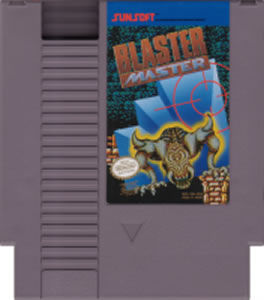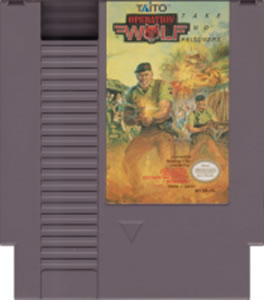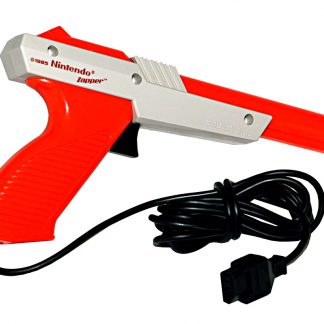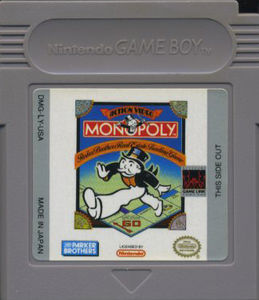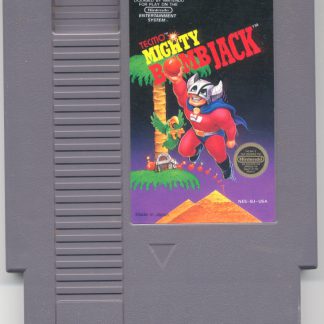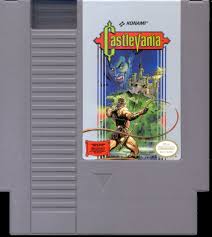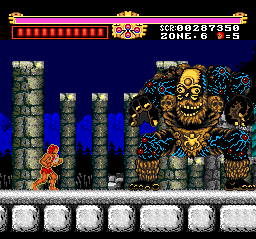
Whenever a new system launches everyone looks for that one title. The one that justifies whatever price you have to pay just to experience it. In the past these would usually be packed in with the system, like Sonic the Hedgehog or Super Mario Brothers. For the Turbographx-16 that game was Legendary Axe.
Legendary Axe was available at the system’s launch in the US in August 1989. You play as Gogan, a barbarian who has been away from your home village for an unspecified length of time. The Cult of Jagu, who control your people have selected your childhood friend Flare as their annual sacrifice and that just won’t stand. Armed with the Legendary Axe you set off to save her. This all sounds a bit like I’m describing Golden Axe but the actual game itself is nothing like it.
Across 6 levels you battle all manner of monsters to reach cult leader Jagu before it’s too late. If you’ve played Astyanax on the NES then this game is essentially the same in nearly all facets. Both games were designed by the same man so it stands to reason he carried over the same game design principles. You have a strength meter that builds up and determines the power behind your attacks. Scattered around the world are idols that can be smashed for power-ups, one of which will extend the length of your strength bar. The difference in power between a fully charged hit and even a half power is staggering to say the least. Receiving any damage resets the meter, wasting your charge.
Determining when to build it up or just spam weaker shots is key. Right up until the end of the game new enemies are introduced with their own attack patterns that must be learned and will force you to make snap decisions in terms of attacking. Aside from increasing attack speed, health and extra lives the axe is your only weapon. Learn to love it.
Graphically this was head and shoulders above anything on the NES. The level of detail in the backgrounds and variety of colors was practically a revelation in those days. A common theme in the advertisements for TG-16 games was the ridiculous sprite sizes the system was capable of. With the exception of the final boss you don’t really see much of that here but the game makes up for it with the sheer amount of enemies it can throw on screen with no slowdown. The soundtrack is equal to the graphics in its variety and matches the game’s them perfectly. This game was a prime example of the TG-16’s technical muscle.
I mentioned Astyanax earlier for a number of reasons. Beyond the basic game mechanics, this game also shares a lot of that game’s flaws. There are far too many bottomless pits and small platforms to navigate, and just like Castlevania there are numerous enemies waiting to pop out right when you jump nearly every single time. Getting hit knocks you back a little too far and will have you rage quitting In short order.
The difficulty isn’t too high for the most part until you reach the end of the game, where the challenge feels like it’s warped in from a different game. The maze you have to navigate runs far too long with next to no hints that you are going the right way. The sheer volume of enemies thrown at you reaches retarded levels and will make you tear your hair out. The bosses as well also exhibit signs of this. Cheap hits and ridiculous attack range mean you will defeat them with a sliver of life left, if at all. You get three continues to beat the game and that’s it.
Even in spite of that this is still a phenomenal game for the system. The issues I described can be overcome by moving at a slower pace rather than trying to run through the game like its Contra. If not Bonk this should have been the pack in game for the TG-16 instead of the terrible Keith Courage.

[nggallery id=40]









